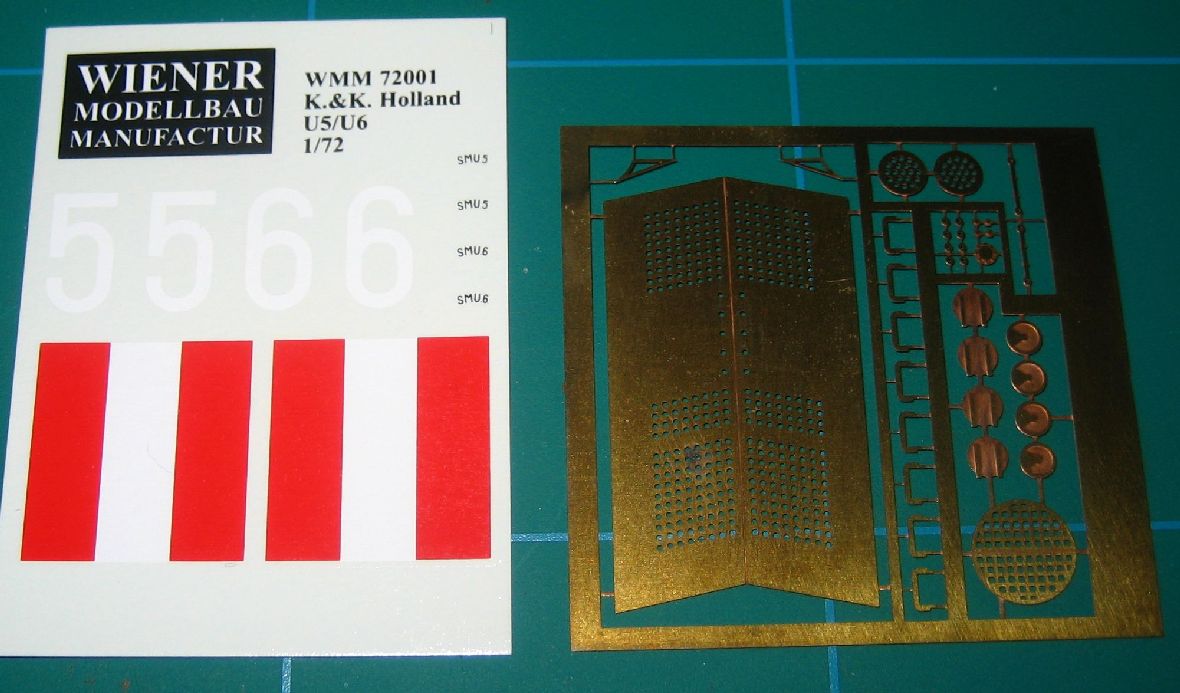
Wiener Modellbau Manufactur 1/72 SMS U5/U6
By Eric Gallaud
History (from Wikipedia)
SM U-5 or U-V was the lead boat of the U-5 class of submarines or U-boats built for and operated by the Austro-Hungarian Navy (German: Kaiserliche und Königliche Kriegsmarine or K.u.K. Kriegsmarine) before and during the First World War. The submarine was built as part of a plan to evaluate foreign submarine designs, and was the first of three boats of the class built by Whitehead & Co. of Fiume after a design by American John Philip Holland.
U-5 was laid down in April 1907 and launched in February 1909. The double-hulled submarine was just over 105 feet (32 m) long and displaced between 240 and 273 metric tons (260 and 301 short tons), depending on whether surfaced or submerged. U-5's design had inadequate ventilation and exhaust from her twin gasoline engines often intoxicated the crew. The boat was commissioned into the Austro-Hungarian Navy in April 1910, and served as a training boat—sometimes making as many as ten cruises a month—through the beginning of the First World War in 1914.
The submarine scored most of her wartime successes during the first year of the war while under the command of Georg Ritter von Trapp. The French armoured cruiser Léon Gambetta, sunk in April 1915, was the largest ship sunk by U-5. In May 1917, U-5 hit a mine and sank with the loss of six men. She was raised, rebuilt, and recommissioned, but sank no more ships. At the end of the war, U-5 was ceded to Italy as a war reparation, and scrapped in 1920. In all, U-5 sank four ships totaling 21,604 gross register tons (GRT).
The kit
This is a multimedia kit, mainly in resin, and you have also some photoetched parts as well as brass cast parts. It is presented in a nice cardboard box.The resin is well moulded without bubbles, the details are crisp.
The hull is made of 4 parts, 2 half side parts (hollowed) and the front and rear (some almost completely full of resin parts). The gluing of the 2 sides together will requires some care as they don't match exactly. You will have to add some reinforcement inside at least one side to maintain the surface to glue face to face. I plan to use some wood. I also plan to use bi-component glue to have a strong joint.
one side to maintain the surface to glue face to face. I plan to use some wood. I also plan to use bi-component glue to have a strong joint.
There are several other resin parts that I will not completely describe one by one. They are usually well engineered and the pour block seems quite easy to remove. On these pictures you can also see the brass propellers and the supports for the guardrail around the kiosk.

|

|

|
Conclusion
This is a very nice kit, quite expensive but considering the quality and the size, is worth the price. Now, I just have to build it. You can see the test assembly of the hull.
I bought it directly from Wiener Modellbau, Peter Plattner. I already bought another kit that I will review here later and I am ready to buy some other kits of this quality.





